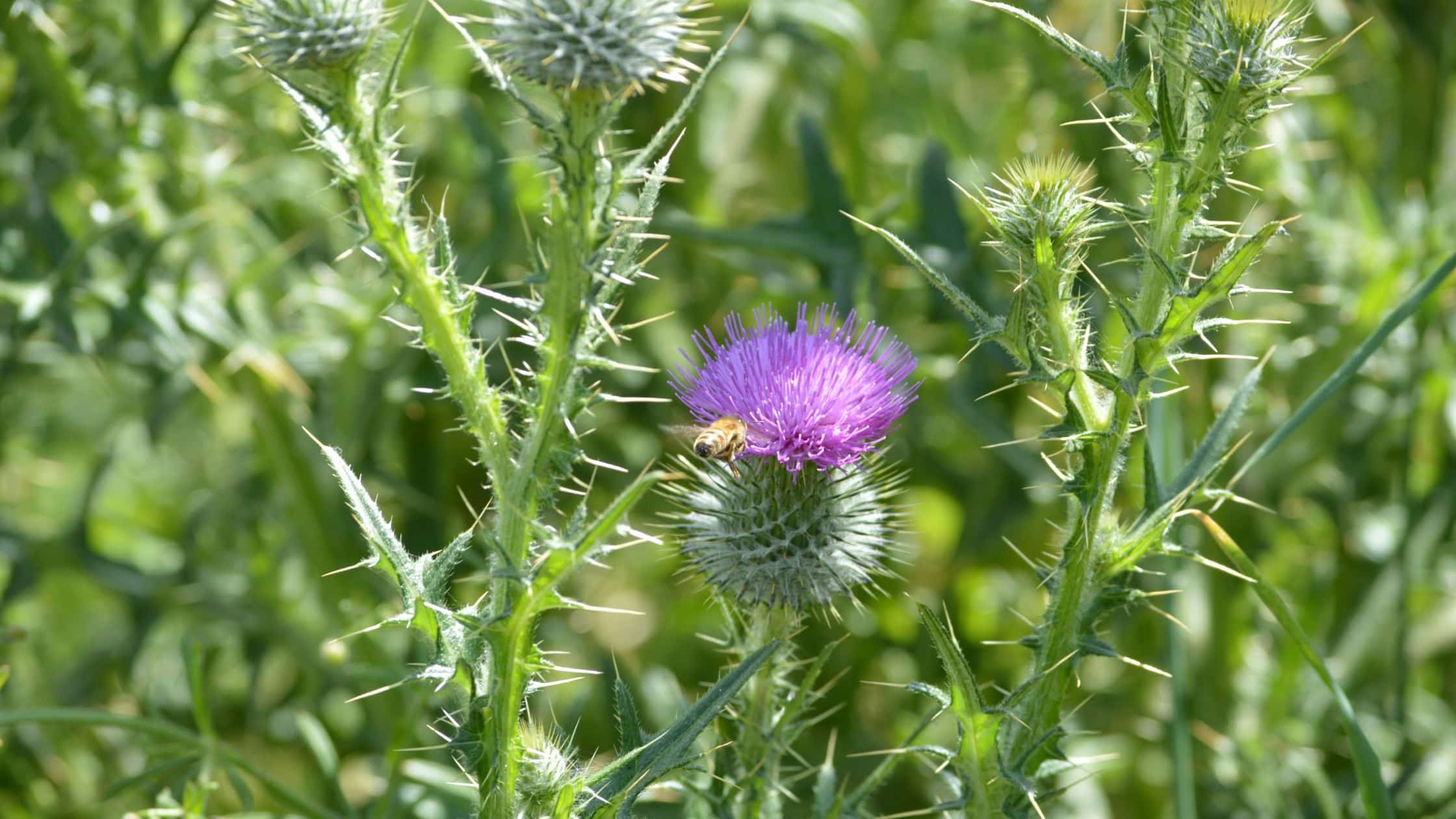
What Weeds to Watch Out for in July (And How to Stop Them)
In July, weeds grow aggressively thanks to heat, sun, and rain. Spotting and treating invaders like crabgrass, nutsedge, and creeping Charlie now can prevent them from taking over your lawn or garden. The key is timely ID, targeted removal, and ongoing prevention.
What Weeds to Watch Out for in July (And How to Stop Them)
By mid-summer, everything is growing — including the weeds you don’t want. July’s warm weather, occasional storms, and long daylight hours create ideal conditions for fast-spreading weeds that can choke out grass, plants, and even ornamental beds if left unchecked.
Whether you’re a DIY lawn warrior or a client wondering how we keep yards looking sharp in summer, this guide breaks down:
-
Which weeds to watch for in July
-
How to remove them effectively
-
Pro-level tips to prevent them from coming back
☀️ Why July Is a Peak Month for Weeds
Weeds thrive on stress — and July is full of it for lawns and gardens. High heat, infrequent rain, and inconsistent mowing all open the door for invasive species to take root.
Even a few missed mowings or a stretch of heavy rain can give weeds the edge, especially:
-
In thin or bare lawn patches
-
Along sidewalks, driveways, and edges
-
In neglected or over-mulched garden beds
Once weeds go to seed, the problem compounds. One plant can drop thousands of seeds, ensuring next year’s headache, too — so early action is critical.
🌾 Top 7 Weeds to Watch for in July
1. Crabgrass
-
What it looks like: Light green, wide-bladed grass that grows in low, sprawling clumps.
-
Why it’s a problem: Spreads rapidly and thrives in hot, compacted soil.
-
How to stop it: Pull by hand or use a post-emergent crabgrass killer before it seeds. In fall, plan to apply pre-emergent in early spring.
2. Nutsedge (Yellow or Purple)
-
What it looks like: Grass-like weed that grows taller than your lawn, often with a triangular stem.
-
Why it’s a problem: Reproduces by tubers and spreads underground.
-
How to stop it: Don’t pull — it spreads. Use a selective nutsedge herbicide (e.g., halosulfuron). Mow high to suppress it.
3. Spurge
-
What it looks like: Low-growing weed with tiny leaves and reddish stems; often forms a mat in hot, dry spots.
-
Why it’s a problem: Seeds quickly and thrives in heat.
-
How to stop it: Pull when soil is moist, removing the entire root. Spot-treat with a broadleaf herbicide if needed.
4. Creeping Charlie (Ground Ivy)
-
What it looks like: Shiny, scalloped leaves that spread in a vine-like pattern. Purple flowers in spring.
-
Why it’s a problem: Spreads aggressively in shade and moisture.
-
How to stop it: Use a triclopyr-based broadleaf killer. Repeat applications may be needed. Improve drainage and mow regularly.
5. Bindweed
-
What it looks like: Small, white morning-glory flowers with thin, vining stems.
-
Why it’s a problem: Twists around plants and structures, hard to fully remove.
-
How to stop it: Cut repeatedly to deplete roots. Spot-spray with systemic herbicide on young plants.
6. Thistle
-
What it looks like: Spiny leaves and stems with purple flowers. Extremely tough root system.
-
Why it’s a problem: Painful, aggressive, and drought-tolerant.
-
How to stop it: Wear gloves and dig deeply — you must get the taproot. Herbicides are effective if applied before flowering.
7. Black Medic
-
What it looks like: Clover-like with small yellow flowers and black seed pods.
-
Why it’s a problem: Common in compacted, dry lawns.
-
How to stop it: Aerate and overseed in fall to fix weak turf. Spot-treat or hand pull before seeds form.
🧤 How We Remove Weeds Without Damaging Your Lawn or Beds
Every yard is different, so our approach depends on the weed type, turf health, and your overall goals. Here’s how we handle July weeds for our clients:
For Lawns:
-
Spot spraying, not blanket spraying — we only target the weed, not the grass.
-
Mow high to reduce stress on the turf and shade out sun-loving weeds.
-
Hand removal when feasible, especially for broadleaf weeds or sensitive areas.
For Garden Beds:
-
Mulch management. We keep mulch at 2–3″ thick — more than that can actually help weeds germinate, especially if seeds get caught in shallow mulch layers.
-
Manual weeding and hand tools. We loosen roots carefully and pull from the base to minimize regrowth.
-
Edge trimming. We keep beds well-defined and edged to prevent spread from lawns and sidewalks.
🛡️ How to Prevent Weeds From Coming Back
Weeds love weak, neglected spaces. Our goal isn’t just to remove them — it’s to strengthen your landscape so they don’t return.
Here’s how we do that:
-
Healthy mowing practices: We mow at proper height and avoid scalping. Taller grass shades out new weeds.
-
Smart watering: Deep, infrequent watering encourages deeper roots in turf and garden plants.
-
Soil health: We improve compacted areas, amend beds when needed, and aerate problem spots.
-
Proper edging: We maintain clean transitions between lawn, beds, and hardscapes.
-
Pre-emergents (timing is key): In spring and again in early fall, we can apply barrier treatments to stop seasonal weeds before they start.
DIY Tip: If you’re maintaining your own yard, consistency is everything. One weekend of neglect in July can lead to weeks of catch-up.
👀 Signs You’re Losing the Weed Battle
If you notice any of the following, it’s time to step up your weed game — or bring in a pro:
-
Bare or thinning lawn areas becoming filled with different-looking grass
-
Sudden spread of small purple, yellow, or white flowers
-
Edges of flower beds or driveways overrun with low-growing mats
-
Neighbors’ yards full of weeds (yes, seeds blow over)
-
Hand pulling stops working — they keep coming back faster
❓ FAQ: Weed Control in July
Q: Is it too late to control weeds in July?
A: Not at all — it’s actually one of the most important times to intervene. Most weeds are growing aggressively now and going to seed. Stopping them in July prevents future outbreaks.
Q: Can I just mow weeds down?
A: Mowing may temporarily hide the issue, but most weeds will bounce back or spread faster. Many even flower below mower height.
Q: Should I use weed & feed in summer?
A: Not usually. These are best for spring or fall. Summer applications can stress grass and promote shallow roots.
Q: What’s the best natural way to stop weeds?
A: Healthy grass or mulch cover is your best defense. For natural spot control, boiling water or vinegar sprays can work on driveways — but not in lawns or near wanted plants.
Q: Why do weeds keep coming back in the same spot?
A: Usually due to soil compaction, thin grass, or improper mowing. Fix the root cause, and the weed problem disappears.




No Comments
Sorry, the comment form is closed at this time.